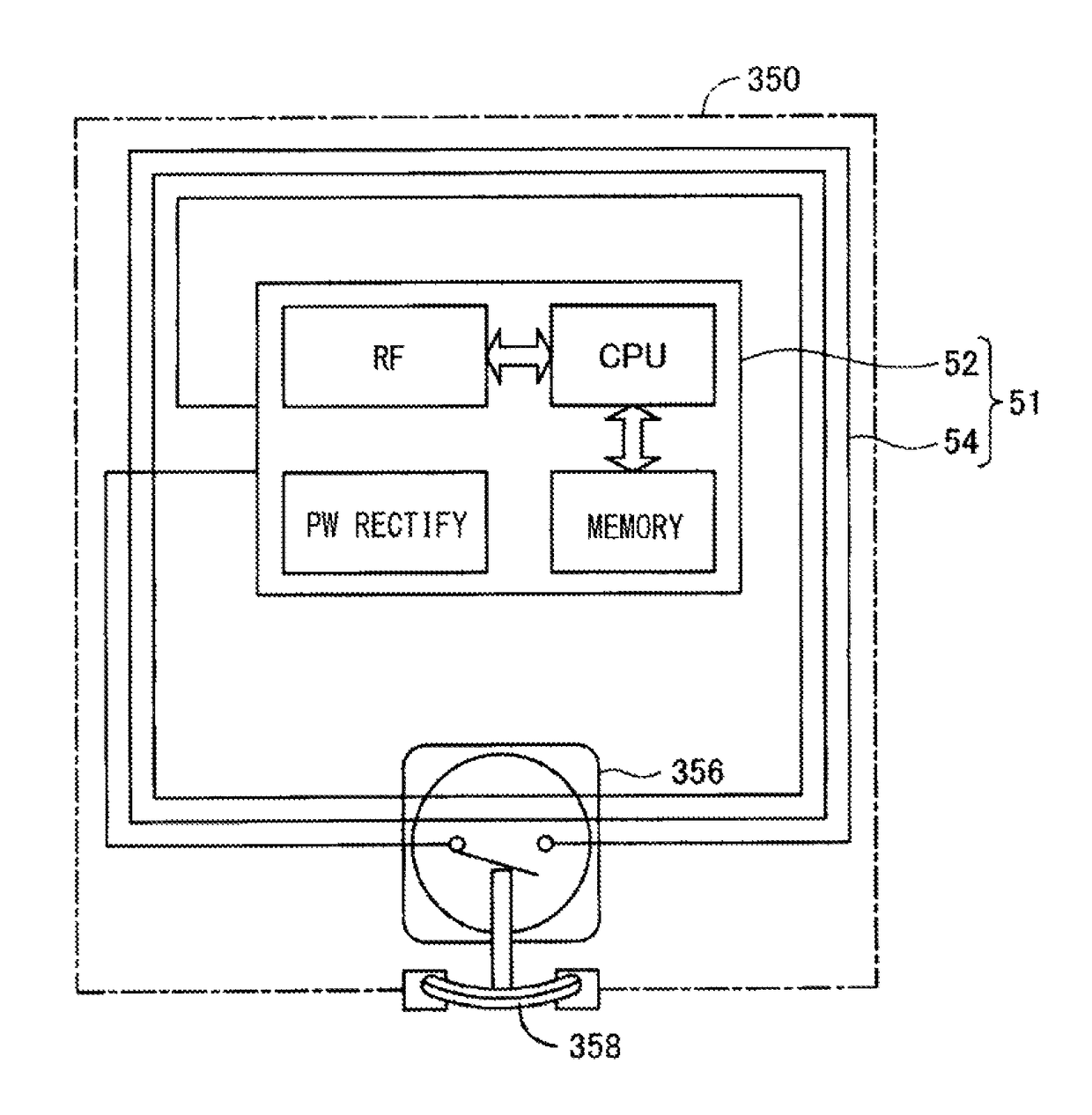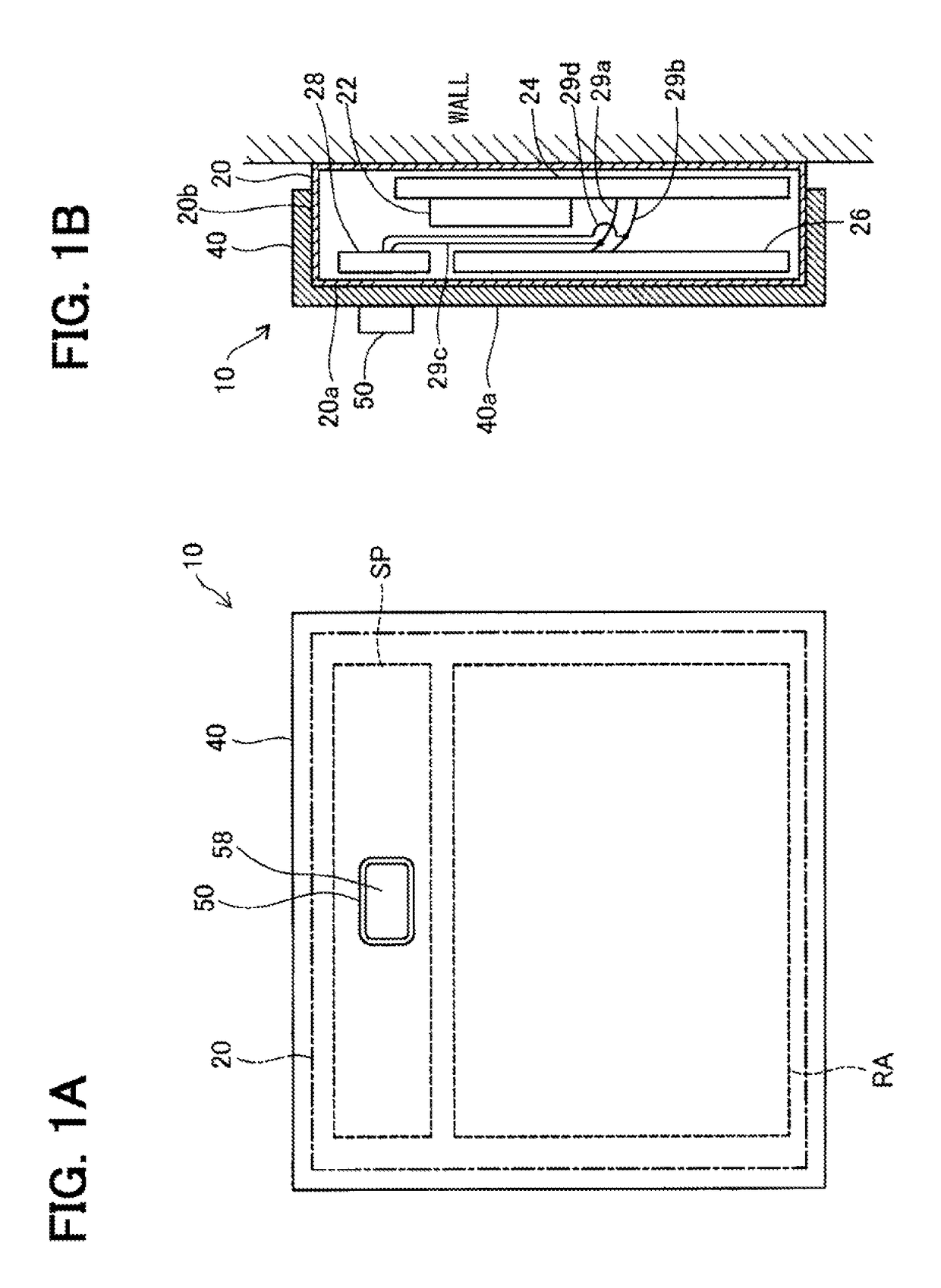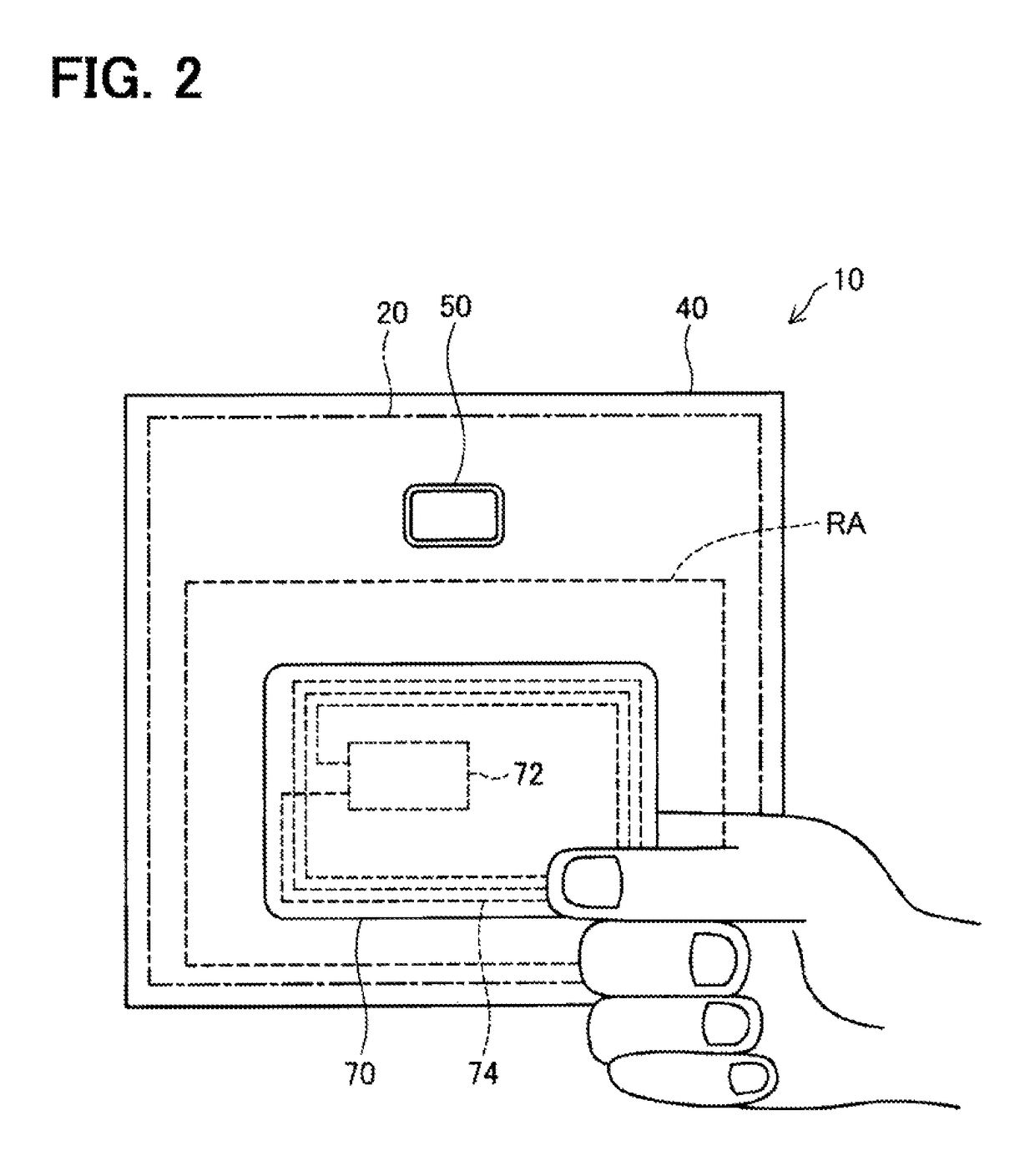Card reader
a card reader and card reader technology, applied in the field of card readers, can solve the problems of difficulty in re-designing the intensity, waterproofness, reading performance, reading distance and communication success ratio, against the reader housing, etc., and achieves the effect of reducing the size, such as the area or the number of turns, and facilitating the design chang
- Summary
- Abstract
- Description
- Claims
- Application Information
AI Technical Summary
Benefits of technology
Problems solved by technology
Method used
Image
Examples
first embodiment
A. First Embodiment
A-1. Configuration
[0022]A card reader 10 according to a first embodiment of the present disclosure is illustrated in FIGS. 1A and 1B. FIG. 1A illustrates a front view; FIG. 1B illustrates a partial cross-sectional side view. The card reader 10 is an apparatus for reading information in an identification (ID) card that is unshown. The present embodiment provides the card reader 10 that is included in an access control system managing access controls for entering and exiting offices, for instance. The ID card is a contactless integrated circuit (IC) card, which may be also referred to a non-contact IC card, for personal identification or personal authentication; the ID card is required to be held by office employees in offices, for instance.
[0023]As in FIGS. 1A and 1B, the card reader 10 includes a main body 20, a cover 40, and a press-button switch unit 50.
[0024]The main body 20 is shaped of a box having a front plate part 20a, a side plate part 20b, and a back pla...
second embodiment
B. Second Embodiment
[0060]A card reader 210 according to a second embodiment of the present disclosure is illustrated in FIGS. 7A and 7B. FIG. 1A illustrates a front view; FIG. 1B illustrates a partial cross-sectional side view. The card reader 210 of the second embodiment is different from the card reader 10 of the first embodiment in the attachment position of the press-button switch unit and the arrangement position of the auxiliary loop antenna. Other components of the card reader 210 of the second embodiment, which are identical to those of the card reader 10 in the first embodiment, are assigned with the same reference numerals as those in FIGS. 1A and 1B without further explanation.
[0061]The auxiliary loop antenna 228 faces the side plate part 20b on the upper side of the main body 20, as illustrated. That is, the loop plane of the auxiliary loop antenna 228, which is parallel with a horizontal plane, faces the side plate part 20b on the upper side of the main body 20. The pr...
third embodiment
C. Third Embodiment
[0065]FIG. 8 is a diagram for explaining an internal configuration of a temperature switch unit 350 included in a card reader according to a third embodiment of the present disclosure. The temperature switch unit 350 in the third embodiment has a configuration corresponding to that of the press-button switch unit 50 in the first embodiment; the card reader of the third embodiment includes a main body and a cover identical to those of the first embodiment, in addition to the temperature switch unit 350.
[0066]The temperature switch unit 350 is different from the press-button switch unit 50 of the first embodiment in that the manipulation portion 58 (see FIG. M) is replaced with a bimetal 358, as in FIG. 8. The bimetal 358, which is arranged to be exposed from the front face of the temperature switch unit 350, functions as a temperature detection part. The attachment position of the temperature switch unit 350 to the cover is the same as that of the press-button swit...
PUM
 Login to View More
Login to View More Abstract
Description
Claims
Application Information
 Login to View More
Login to View More - R&D
- Intellectual Property
- Life Sciences
- Materials
- Tech Scout
- Unparalleled Data Quality
- Higher Quality Content
- 60% Fewer Hallucinations
Browse by: Latest US Patents, China's latest patents, Technical Efficacy Thesaurus, Application Domain, Technology Topic, Popular Technical Reports.
© 2025 PatSnap. All rights reserved.Legal|Privacy policy|Modern Slavery Act Transparency Statement|Sitemap|About US| Contact US: help@patsnap.com



